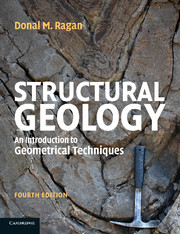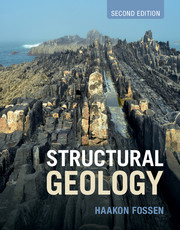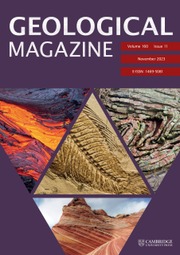Structural Geology
This combination of text and lab book presents an entirely different approach to structural geology. Designed for undergraduate laboratory classes, it provides a step-by-step guide for solving geometric problems arising from structural field observations. The book discusses both traditional methods and cutting-edge approaches, with emphasis given to graphical methods and visualization techniques that support students in tackling challenging two- and three-dimensional problems. Numerous exercises encourage practice in using the techniques, and demonstrate how field observations can be converted into useful information about geological structures and the processes responsible for creating them. This updated fourth edition incorporates new material on stress, deformation, strain and flow, and the underlying mathematics of the subject. With stereonet plots and solutions to the exercises available online at www.cambridge.org/ragan, this book is a key resource for undergraduates, advanced students and researchers wanting to improve their practical skills in structural geology.
- A uniquely practical book specifically designed for structural geology lab classes, with more than 45,000 copies of the previous editions sold
- Provides the relevant introductory mathematics and step-by-step instructions that guide students in using geometric techniques
- Includes end-of-chapter exercises with full solutions available online to instructors, and online stereonet plots for student use
Reviews & endorsements
'The Ragan textbook on Structural Geology: An Introduction to Geometrical Techniques offers a fresh, up-to-date account on modern methods for analysing both brittle and ductile structures. The book is thorough and comprehensive and its advantage over many other books is that it covers the basics in an exhaustive way. It is therefore extremely well suited for undergraduate students, but also for professional Structural Geologists and Academics.' Dr Uwe Ring, University of Canterbury, New Zealand
'This excellent book deals with a multitude of practical methods for structural geologists. These methods range from those appropriate at first year undergraduate level right through to those relevant to graduate research. The various techniques are very clearly explained and are richly illustrated with clear diagrams and worked examples. The new edition represents a significant expansion of earlier ones, and contains something for all structural geologists.' Dr Richard Lisle, Cardiff University
'Donal Ragan's new edition of Structural Geology: An Introduction to Geometrical Techniques is a classic with legs. Retaining all of the approachability and sound advice which has welcomed and guided generations of geologists, the new edition seamlessly incorporates an even stronger quantitative foundation, resplendent with fully integrated examples and exercises. Ragan's new digital illustrations will not disappoint those who admire his clean, unique drawing style, and will illuminate complex geometrical constructs for a new era of geologists.' Professor Patrick Kennelly, Long Island University, New York
'As so much of the content is timeless it is perhaps not so surprising to find the Structural Geology: An Introduction to Geometrical Techniques re-appearing in bookshops. Although many methods can now be performed on commercial software, including i-phone apps, working through the exercises here should be de rigeur for graduating geologists. … as a reference book, a source for clearly laid out methods - it serves a very useful purpose.' Geological Magazine
Product details
September 2009Paperback
9780521745833
632 pages
244 × 188 × 36 mm
1.3kg
489 b/w illus. 32 tables 242 exercises
Available
Table of Contents
- Preface
- 1. Structural planes
- 2. Thickness and depth
- 3. Lines and intersecting planes
- 4. Planes and topography
- 5. Stereographic projections
- 6. Rotations
- 7. Vectors
- 8. Faults
- 9. Stress
- 10. Faulting
- 11. Deformation
- 12. Strain
- 13. Flow
- 14. Folds
- 15. Parallel folds
- 16. Similar folds
- 17. Folds and topography
- 18. Structural analysis
- 19. Tectonites
- 20. Drill hole data
- 21. Maps and cross sections
- 22. Block diagrams
- Appendix A. Descriptive geometry
- Appendix B. Spherical trigonometry
- Index.








